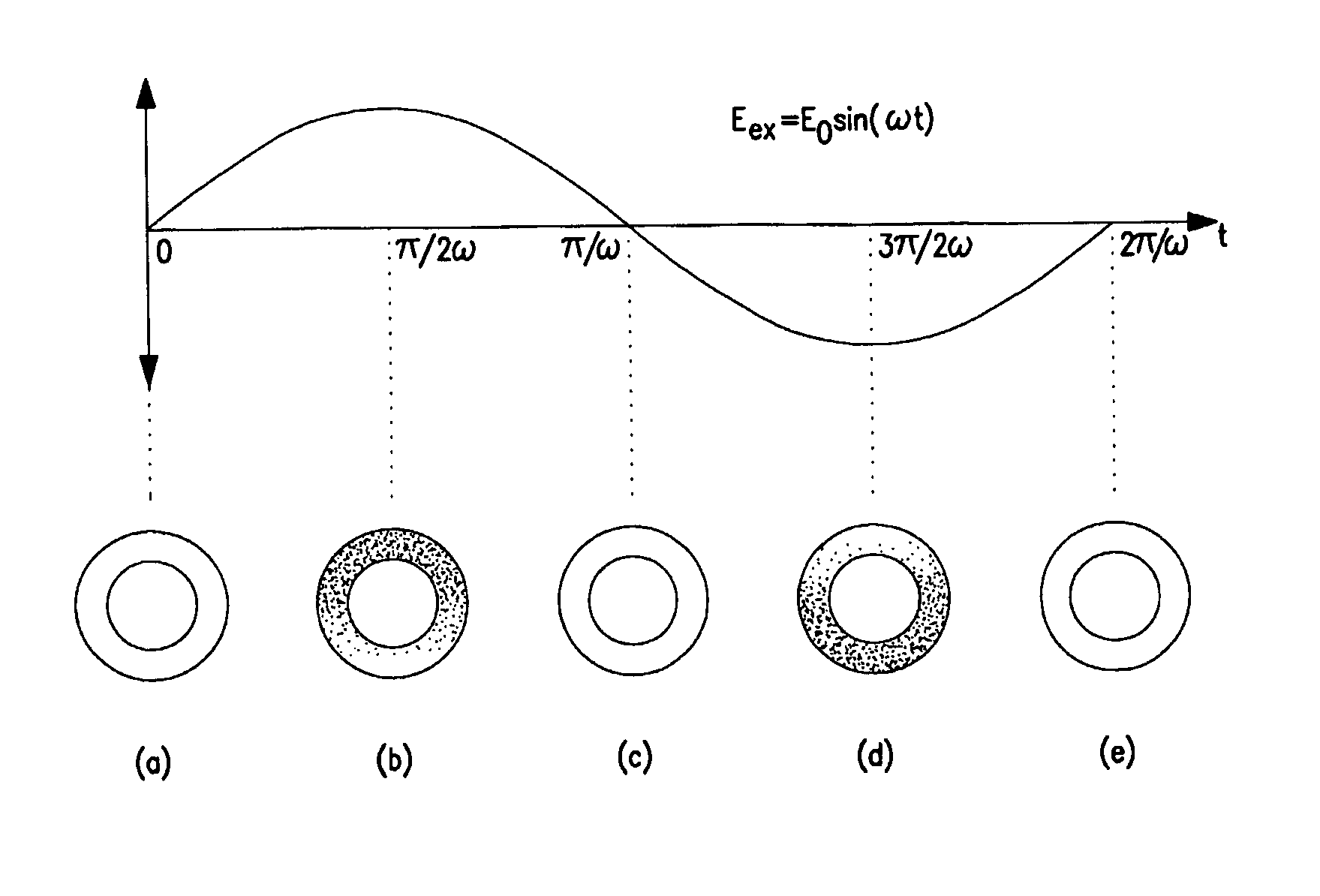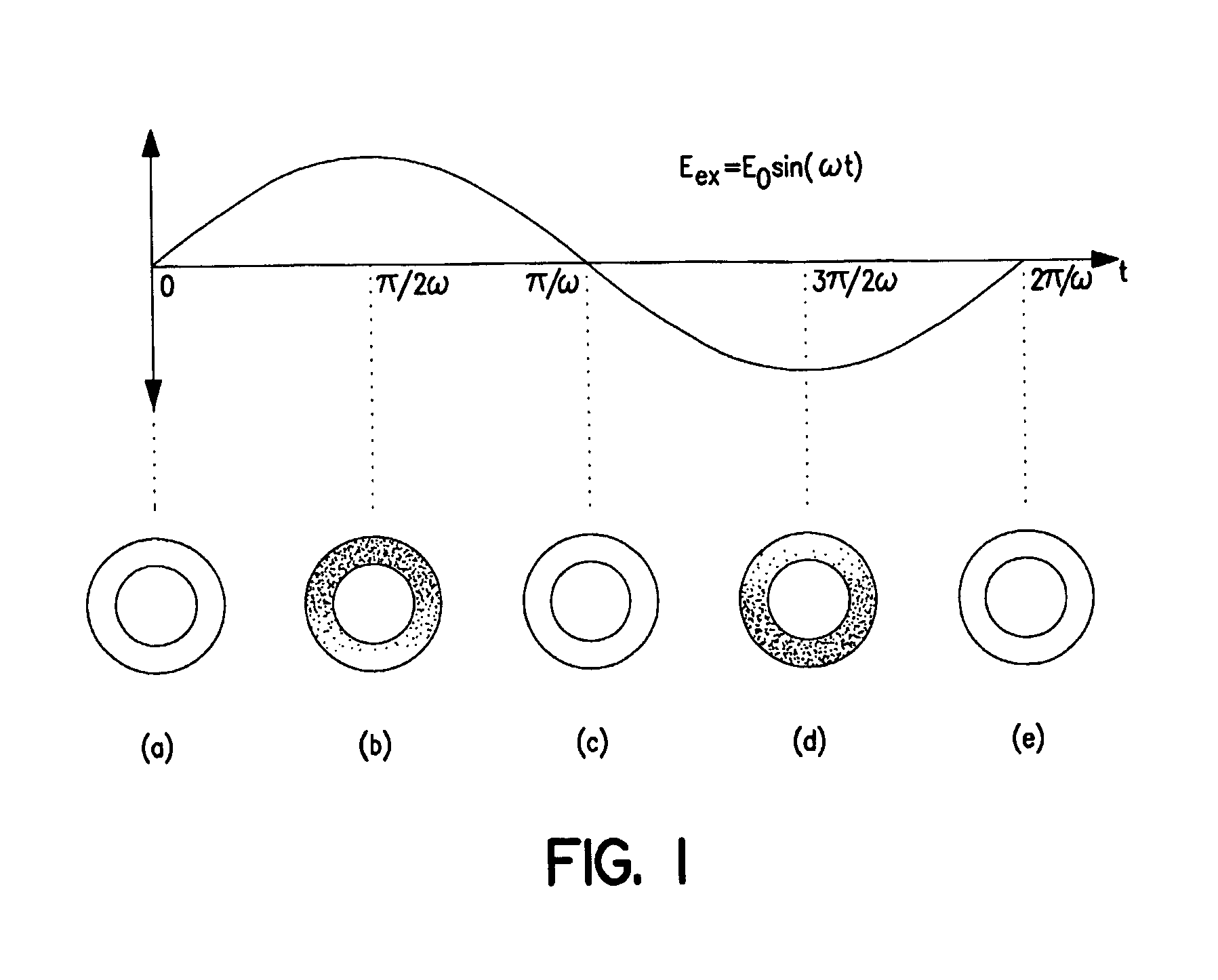Analysis and fractionation of particles near surfaces
a technology of particle size and surface potential, applied in the direction of liquid/fluent solid measurement, fluid pressure measurement, peptide, etc., can solve the problems of large equipment complexity and high cost, and the simple dielectrophoretic setup does not generally allow quantitative evaluation of the surface potential or surface conductivity of particles
- Summary
- Abstract
- Description
- Claims
- Application Information
AI Technical Summary
Benefits of technology
Problems solved by technology
Method used
Image
Examples
example 1
Particle Array Assembly: Half-space Geometry
[0117]FIG. 6 displays bead velocities measured in the course of array assembly of oligo-dT(25) particles of diameter 2.8 μm (obtained from Dynal, Oslo, Norway) using κα≅45 (see also the conditions shown in the inset of the lower panel) and invoking video microscopy. Analysis of the “streaking” in the snapshots in the upper portion of FIG. 6, taken with 1 / 30 s exposure, reveals the significant acceleration of particles traversing the impedance step, created by a variation in oxide thickness from ˜1000 Å to ˜100 Å. Visual inspection also reveals that particles are simultaneously displaced toward the substrate. The instantaneous velocities extracted by image analysis of a series of snapshots are plotted in the lower panel of FIG. 6. Arrays of assembled particles act in the manner of low impedance regions of the substrate: they generate in-flow directed toward the array perimeter and attract additional particles which accelerate toward the arr...
example 2
Dependence of Relaxation Frequency, ωR, on Particle Size and Composition
[0121]FIG. 10 displays the results of determining the relaxation frequency by inducing an array expansion for a variety of particle sizes and for different types of particle surface chemistries. In a first group, particles included were carboxylate-modified or amine-modified polystryrene particles (obtained from Dyno, Oslo, NO) as well as “oligo-dT(25)” particles (obtained from Dynal, Oslo, NO). In a second group, particles were coated with a monoclonal antibody against interleukin-6 (obtained from R&D Systems, Minneapolis, Minn.). The anticipated scaling behavior of the relaxation frequency, ωR½˜α (particle size), as discussed herein, is confirmed by the experiments.
[0122]The solid lines represent a fit of the data to a simple expression discussed herein and produces a diffusivity parameter, D, which reflects the local ion-mediated surface conductance, as discussed herein. Invoking Eq. 4, the data in FIG. 10 ma...
example 3
[0123]From experiments illustrated in FIGS. 6 and 10, values for the maximum velocity of beads traversing the step from thick oxide to thin oxide, vmax≃0.8 mm / s, and the relaxation frequency, ωR≃2 kHz, were determined. The theoretical model and algorithm underlying FIGS. 3, 5 and 7, yield corresponding values of φ, ≃0.5V and u / u∞≃3.9×10−3; this combination in turn yields a value of a σ≃0.15 S / m and Du≃290; here, u∞≃0.02 Sm2 / C, as determined from the tabulated molar conductivity for Na+. The value for φs may be compared to the surface potential of ˜330 mV corresponding to the titratable charge of carboxylate-modified polystyrene particles of 1 COO− / 4 Å2 or 400 μC / cm2; the results obtained indicate that the effective surface charge of oligonucleotide-modified particles substantially exceeds that of carboxylate-modified particles. The value for ωR indicates the surface mobility of small cations relevant to the experiments to be smaller by a factor of ≧100 than the mobi...
PUM
| Property | Measurement | Unit |
|---|---|---|
| frequency | aaaaa | aaaaa |
| ionic strength | aaaaa | aaaaa |
| particle diameter | aaaaa | aaaaa |
Abstract
Description
Claims
Application Information
 Login to View More
Login to View More - R&D
- Intellectual Property
- Life Sciences
- Materials
- Tech Scout
- Unparalleled Data Quality
- Higher Quality Content
- 60% Fewer Hallucinations
Browse by: Latest US Patents, China's latest patents, Technical Efficacy Thesaurus, Application Domain, Technology Topic, Popular Technical Reports.
© 2025 PatSnap. All rights reserved.Legal|Privacy policy|Modern Slavery Act Transparency Statement|Sitemap|About US| Contact US: help@patsnap.com



